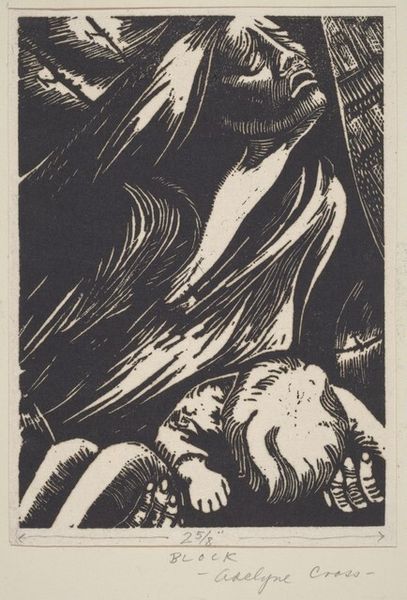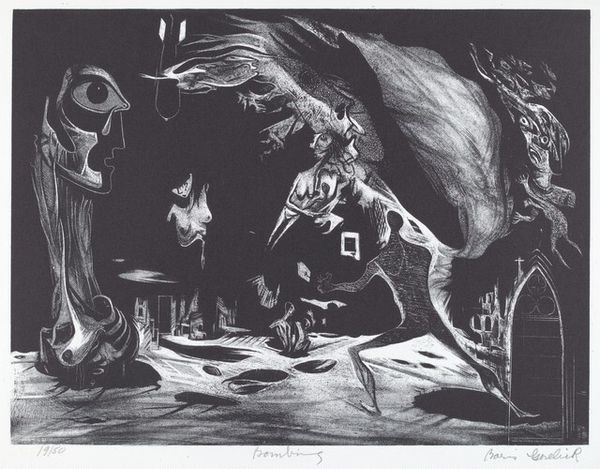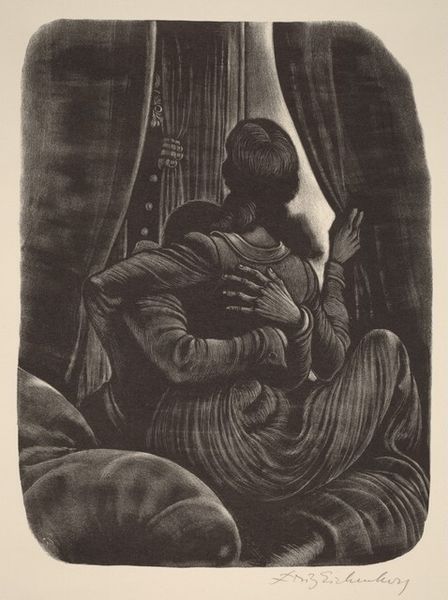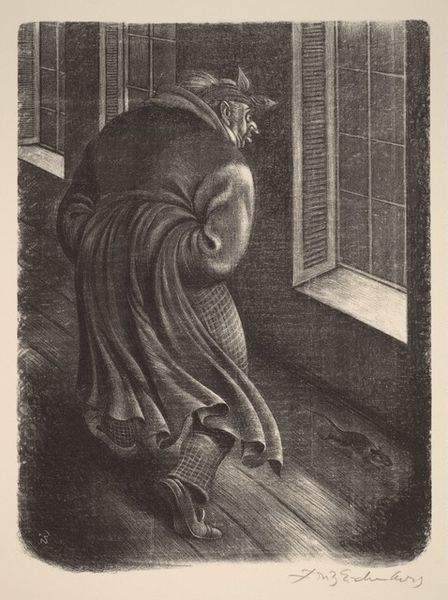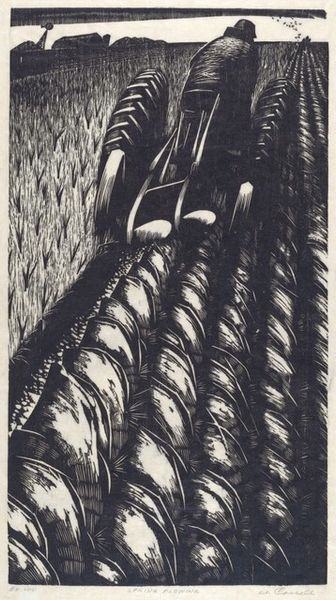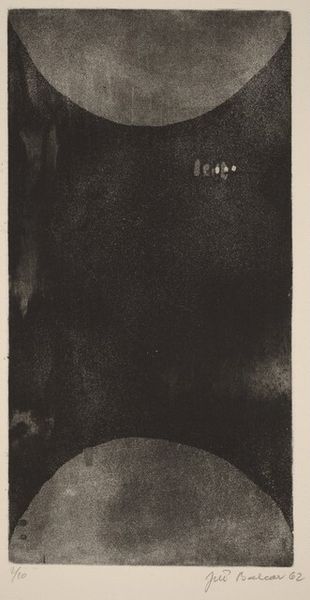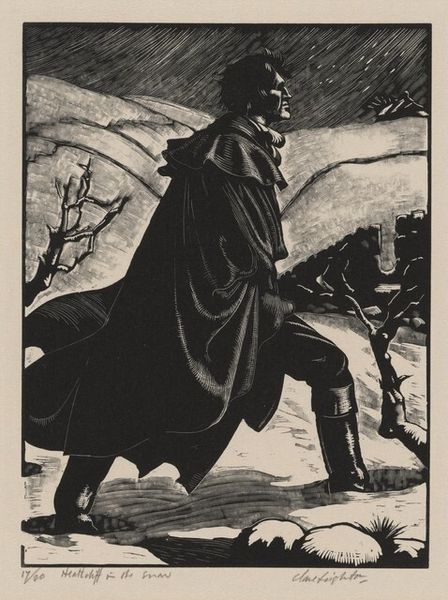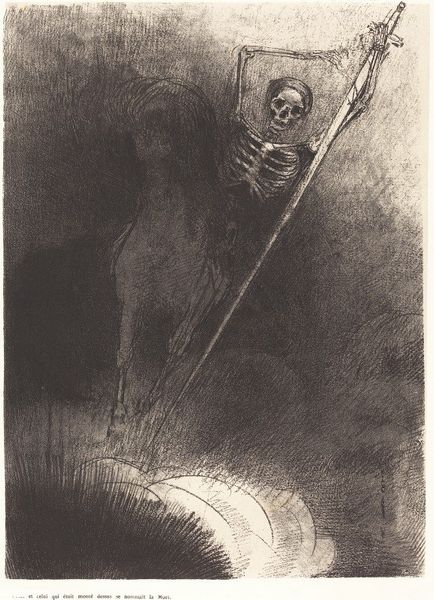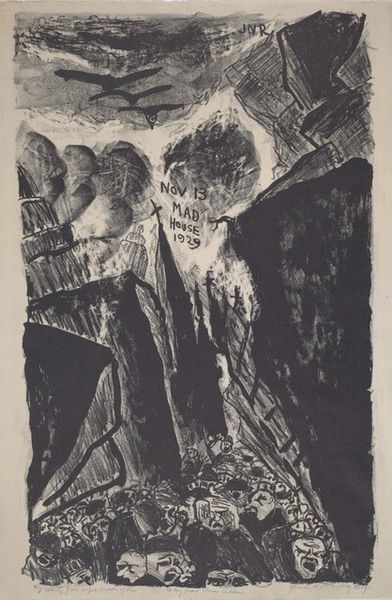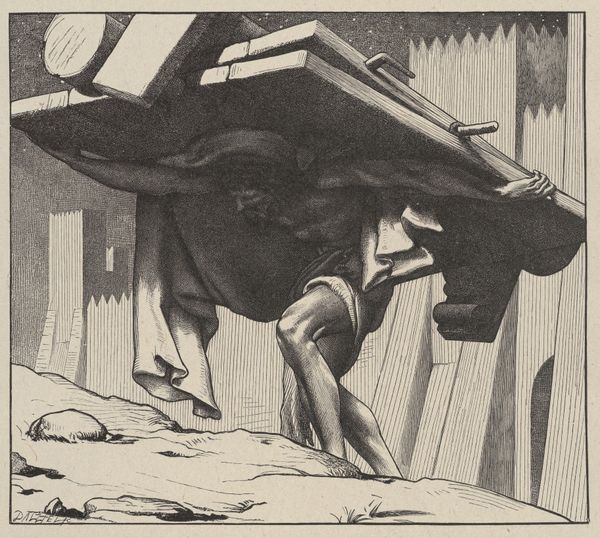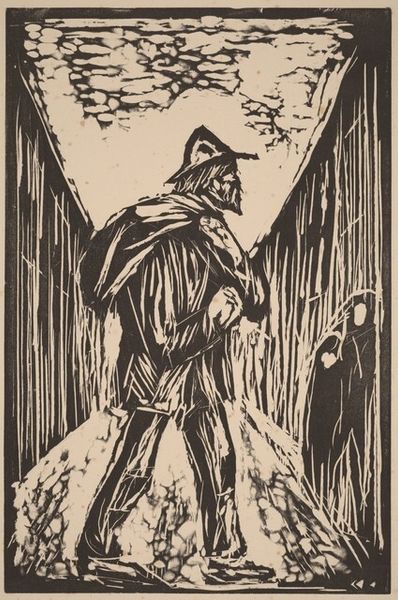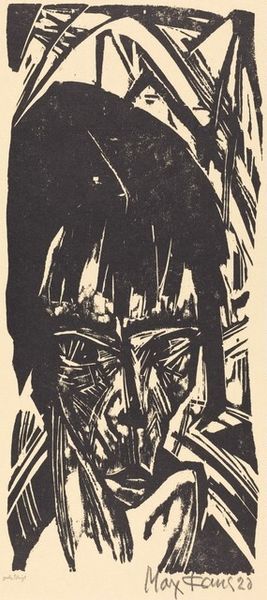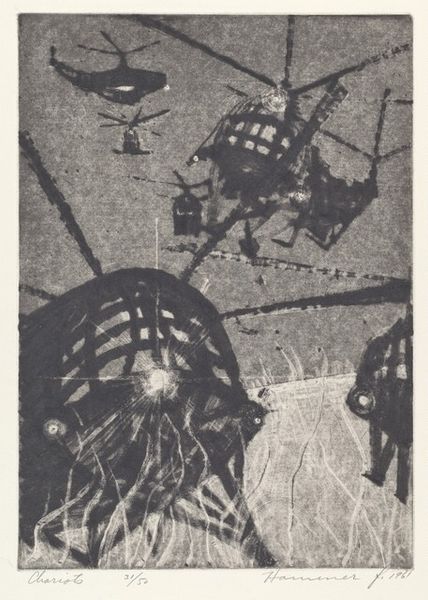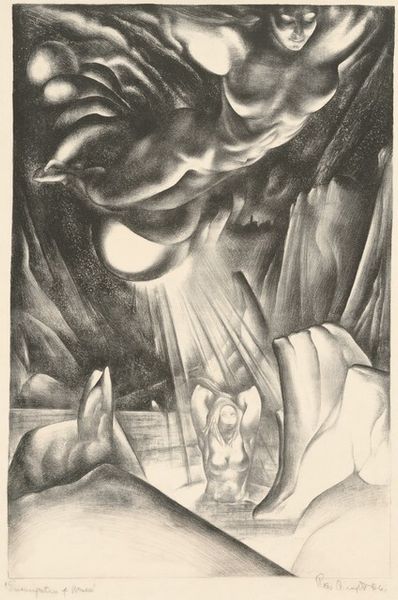
The Boy Who Threw the Stone (Book IV: Lacerations, facing p.134) 1949
0:00
0:00
drawing, print, pencil, graphite, charcoal
#
pencil drawn
#
drawing
#
narrative-art
# print
#
charcoal drawing
#
figuration
#
pencil drawing
#
pencil
#
graphite
#
charcoal
Copyright: National Gallery of Art: CC0 1.0
Editor: So, this is Fritz Eichenberg’s "The Boy Who Threw the Stone," from 1949. It’s a print, and it has this really stark, shadowy feel. It’s kind of menacing. How do you interpret this work? Curator: I see a potent representation of juvenile anger, and much more. Eichenberg, deeply affected by WWII, consistently grappled with themes of violence and justice. Think about the time this was made – just after the war. What suppressed rage and trauma do you think are embodied here? The stone-throwing is rarely just an act of simple rebellion, is it? Editor: Definitely. It feels like it's connected to a bigger feeling of powerlessness. Curator: Precisely. Now, notice the setting: bleak, stark. What does it suggest to you about the boy’s socio-economic situation? Consider his clothing, his stance, and the looming shadow. They contribute to an understanding of marginalization. Where might that anger be directed? And toward whom? Editor: It makes you wonder what he's been through, what systems have failed him. Is he a victim or aggressor, or both? Curator: That duality is key. Eichenberg challenges us to look beyond simple judgments. Are we looking at a future perpetrator shaped by circumstance? This print functions as a call to consider how societal failures foster anger and violence, particularly in marginalized youth. Editor: That’s such a crucial point. The piece really speaks to cycles of violence and the responsibility we all share. I'll never see a stone thrown the same way again. Curator: It highlights the intersection of personal struggle and systemic injustice, doesn’t it? Hopefully that also gives us pause when we judge such actions in our own contemporary context.
Comments
No comments
Be the first to comment and join the conversation on the ultimate creative platform.
